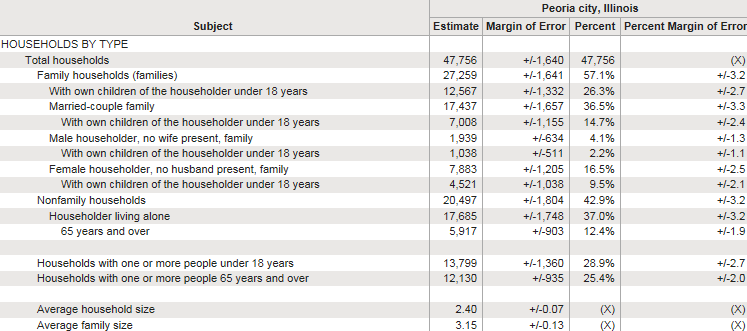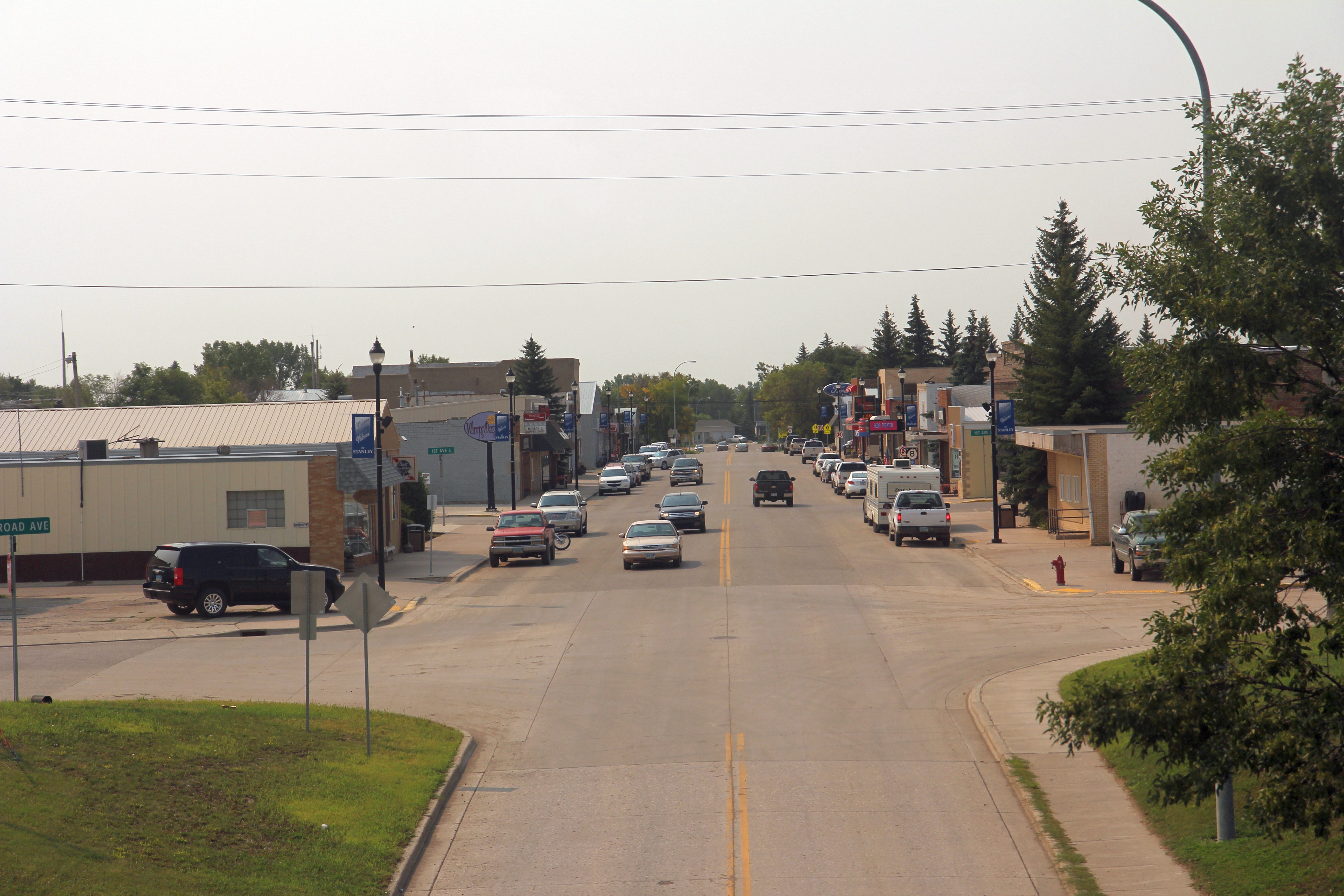|
Adams County, North Dakota
Adams County is a county in the U.S. state of North Dakota. As of the 2020 census, the population was 2,200, and was estimated to be 2,141 in 2024, The county seat is Hettinger. History The county was created on April 17, 1907, and organized one week later. It was named for John Quincy Adams (1848–1919), a railroad official for the Milwaukee Road Railroad and distant relative of sixth U.S. President John Quincy Adams (1767–1848). In 1923, Adams County was the site of one of the deadliest tornadoes in North Dakota's recorded history. The "Adams County Twister' killed eight people and injured 20. Geography Adams County lies on the south line of North Dakota. Its south boundary line abuts the north boundary line of the state of South Dakota. Its terrain consists of semi-arid low rolling hills. Its terrain generally slopes eastward, and its highest point is on its upper west boundary line, at ASL. According to the United States Census Bureau, the county has a total area o ... [...More Info...] [...Related Items...] OR: [Wikipedia] [Google] [Baidu] |
Adams County Courthouse (North Dakota)
The Adams County Courthouse is a three-story brick courthouse building in Hettinger, North Dakota. Built in 1928, it was designed by Ira Rush, an architect who won competitions for design of several other courthouses in the state. The design of this one had elements of Art Deco Art Deco, short for the French (), is a style of visual arts, architecture, and product design that first Art Deco in Paris, appeared in Paris in the 1910s just before World War I and flourished in the United States and Europe during the 1920 ..., but appears to have been limited by budget to a more economical design. (pages 11-12 in ND Courthouses TR) and There was a wood-frame courthouse and a sheriff's house east of the location from 1907; this building was built in 1928 and those buildings were removed by the 1960s. It was built by contractor Fred R. Comb. References Courthouses on the National Register of Historic Places in North Dakota County courthouses in North Dakota Art Deco a ... [...More Info...] [...Related Items...] OR: [Wikipedia] [Google] [Baidu] |
Sioux County, North Dakota
Sioux County is a county located along the southern border of the U.S. state of North Dakota. As of the 2020 census, the population was 3,898, and was estimated to be 3,713 in 2024. Its eastern border is the Missouri River and its county seat is Fort Yates. History The county was created by proclamation of Governor Louis B. Hanna on September 3, 1914. It was named for the Native American Lakota, whose historic territory included this area. The county government organization was completed on September 12 of that year. The county lies entirely within the Standing Rock Sioux Reservation, forming the northernmost 30 percent of the reservation; the balance of the reservation is in South Dakota. It is the only county in North Dakota that is entirely within an Indian reservation. From 2013 to 2018, Sioux County was included in the Bismarck, ND Metropolitan Statistical Area. Geography Sioux County lies on the south line of North Dakota. Its south boundary line abuts the north bou ... [...More Info...] [...Related Items...] OR: [Wikipedia] [Google] [Baidu] |
Poverty In The United States
In the United States, poverty has both social and political implications. Based on Measuring poverty, poverty measures used by the Census Bureau (which exclude non-cash factors such as food stamps or medical care or public housing), America had 37 million people defined as living in poverty in 2023; this is 11 percent of the population. Some of the many causes include income, inequality, inflation, unemployment, debt traps and poor education.Western, B. & Pettit, B., (2010)Incarceration and social inequality.Daedalus, 139(3), 8-19 The majority of adults living in poverty are employed and have at least a high school education. Although the US is a relatively wealthy country by international standards, it has a persistently high poverty rate compared to other developed countries due in part to a less generous welfare system. Efforts to alleviate poverty include New Deal-era legislation during the Great Depression, to the national war on poverty in the 1960s and poverty alleviat ... [...More Info...] [...Related Items...] OR: [Wikipedia] [Google] [Baidu] |
American Community Survey
The American Community Survey (ACS) is an annual demographics survey program conducted by the United States Census Bureau. It regularly gathers information previously contained only in the long form of the United States census, decennial census, including ancestry, US citizenship status, educational attainment, income, language proficiency, migration, Disability in the United States, disability, employment, and housing characteristics. No respondents personal information is released, and only used statistically in these data which are used by many Public sector, public-sector, Private sector, private-sector, and not-for-profit stakeholders to allocate funding, track shifting demographics, plan for emergencies, and learn about local communities. Sent to approximately 295,000 addresses monthly, or 3.5 million addresses annually, it is the largest household survey that the Census Bureau administers. The American Community Survey gathers information annually in the 50 U.S. state, U ... [...More Info...] [...Related Items...] OR: [Wikipedia] [Google] [Baidu] |
National Association Of Realtors
The National Association of Realtors (NAR) is an American trade association for those who work in the real estate industry. it had over 1.5 million members, making it the largest trade association in the United States including NAR's institutes, societies, and councils, involved in all aspects of the residential and commercial real estate industries. The organization holds a U.S. trademark over the term "realtor". NAR also functions as a self-regulatory organization for real estate brokerage. The organization is headquartered in Chicago. Overview The National Association of Realtors was founded on May 12, 1908 as the National Association of Real Estate Exchanges in Chicago, Illinois. In 1916, it changed its name to The National Association of Real Estate Boards (NAREB). The current name was adopted in 1972. NAR's members are residential and commercial real estate brokers, real estate salespeople, immovable property managers, appraisers, counselors, and others engaged in all ... [...More Info...] [...Related Items...] OR: [Wikipedia] [Google] [Baidu] |
North Dakota Highway 22
North Dakota Highway 22 (ND 22) is a major north–south state highway in North Dakota. It begins at the South Dakota state line south of the small town of Reeder and ends at ND 23 west of New Town and north of Mandaree. The route has one concurrency with U.S. Route 12 (US 12). The highway widely parallels US 85, running about fifteen miles east of it. Route description North Dakota Highway 22 begins at the South Dakota state line as a continuation of South Dakota Highway 79. From there it heads north to the town of Reeder. North of Reeder, the route joins U.S. Route 12, heading southeast for two miles. It then heads north, joining with Highway 21 south of New England. Highway 21's concurrency with Highway 22 ends at New England, and Highway 22 continues north to Dickinson, where it has a truck detour around a low railroad bridge before it meets Interstate 94 Bus. Loop and Interstate 94 itself. ND 22 continues north to meet Highway 200 just south of the city of ... [...More Info...] [...Related Items...] OR: [Wikipedia] [Google] [Baidu] |
North Dakota Highway 8
North Dakota Highway 8 (ND 8) is a north–south State highway#United States, state highway in North Dakota, United States. The highway is split into two segments. The southern segment is long and travels from Lake Sakakawea near Twin Buttes, North Dakota, Twin Buttes to South Dakota Highway 75 (SD 75) near Hettinger, North Dakota, Hettinger. The northern segment is long and travels from Saskatchewan Highway 9 (SK 9) in Northgate, North Dakota, Northgate on the Canada–United States border to North Dakota Highway 23, ND 23 near New Town, North Dakota, New Town. The highway was originally continuous but was separated by the formation of Lake Sakakawea in the 1950s. Route description ND 8 enters North Dakota at SD 75’s northern terminus, south of Hettinger, North Dakota, Hettinger, where it turns east onto U.S. Route 12 in North Dakota, US 12 and runs concurrently for . For the next , ND 8 heads north alone after leaving US&nbs ... [...More Info...] [...Related Items...] OR: [Wikipedia] [Google] [Baidu] |
US 12
U.S. Route 12 or U.S. Highway 12 (US 12) is an east–west United States Numbered Highway, running from Aberdeen, Washington, to Detroit, Michigan, for almost . The highway has mostly been superseded by Interstate 90 (I-90) and I-94, but, unlike most U.S. Highways that have been superseded by an Interstate, US 12 remains intact as an important link for local and regional destinations. The highway's western terminus in Aberdeen is at an intersection with US 101, while the highway's eastern terminus in Downtown Detroit is at the corner of Michigan and Cass avenues, near Campus Martius Park. Route description , - , WA , , - , ID , , - , MT , , - , ND , , - , SD , , - , MN , , - , WI , , - , IL , , - , IN , , - , MI , , - , Total , Washington The western terminus of US 12 is located in Aberdeen. The highway loosely follows the eastbound leg of the Lewis and Clark Expedition, between Wallula and Clarkston, thus being ... [...More Info...] [...Related Items...] OR: [Wikipedia] [Google] [Baidu] |
Slope County, North Dakota
Slope County is a County (United States), county in the U.S. state of North Dakota. As of the 2020 United States census, 2020 census, the population was 706, making it the List of counties in North Dakota, least populous county in North Dakota and the List of United States counties and county-equivalents, 18th-least populous county in the United States. The county seat is Amidon, North Dakota, Amidon. History The vote to create Slope County, by partitioning the lower portion of Billings County, North Dakota, Billings, was held on November 3, 1914. This was the final (as of 2019) alteration to that once-large Dakota county, as Bowman County, North Dakota, Bowman had been partitioned off in 1883, and Golden Valley County, North Dakota, Golden Valley was split off in 1910. The unorganized Slope County was not attached to another county for administrative or judicial purposes during the interregnum; on January 14, 1915, the county organization was effected. The name refers to the Mi ... [...More Info...] [...Related Items...] OR: [Wikipedia] [Google] [Baidu] |
Bowman County, North Dakota
Bowman County is a county in the U.S. state of North Dakota. As of the 2020 census, the population was 2,993, and was estimated to be 2,886 in 2024, The county seat and the largest city is Bowman. History The legislature of the Dakota Territory designated Bowman (named for Edward M. Bowman, a member of the territorial House of Representatives during the 1883 session) as a separate county on March 8, 1883, although it was not organized at that time. In 1885, its boundaries were altered to cede territory to Billings and Villard Counties (Villard itself was eliminated in 1887). In 1891, and again in 1896, the South Dakota legislature eliminated the not-yet-organized Bowman County, due to scant settlement in the area, but these actions either were not put into effect (the 1891 vote) or were overturned in judicial appeal (the 1896 vote). A decision by the North Dakota supreme court on May 24, 1901, resurrected Bowman County. That decision also caused the county's area to slight ... [...More Info...] [...Related Items...] OR: [Wikipedia] [Google] [Baidu] |




